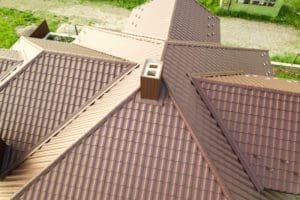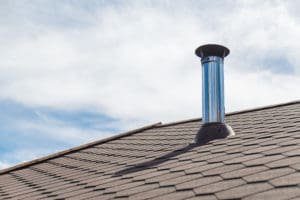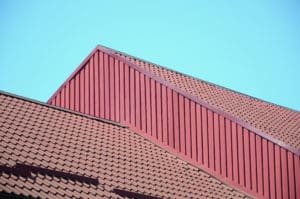As the winter season approaches, it’s crucial for homeowners to consider the impact of harsh weather conditions on their home’s exterior, particularly the siding. Siding serves as a protective barrier against the elements, but winter can pose unique challenges. This article will delve into how to best protect your home’s siding during the cold months, ensuring that it remains in optimal condition.
Understanding the Impact of Winter on Your Home’s Siding
Winter can be particularly brutal on a home’s siding. From freezing temperatures to heavy snowfall, each factor can contribute to long-term damage if proper precautions are not taken. Understanding these risks is the first step in effectively protecting your siding.
The Role of Temperature Fluctuations
Temperature fluctuations during winter can lead to expansion and contraction in siding materials. This process weakens the material over time. For example, vinyl siding can become brittle when exposed to cold temperatures, making it more susceptible to cracking and breaking. Homeowners should pay special attention to how their siding responds to these extremes, as the cumulative effects can be detrimental.
Moreover, when spring arrives, sudden temperature increases can create additional stress on the siding as it attempts to expand quickly, potentially leading to warping. Ensuring that the siding is resilient against these fluctuations is essential to maintaining its integrity. It is also advisable to consider the use of insulation behind the siding, which can help moderate temperature changes and reduce the strain on the exterior materials. This not only protects the siding but can also improve the overall energy efficiency of the home.
Effects of Snow and Ice on Siding
Snow accumulation can be heavy, and when combined with ice, it poses a significant risk to siding. The weight of snow can stress siding materials, especially if they are already weakened. Ice can form around seams and joints, leading to moisture buildup that can seep behind the siding. This trapped moisture can foster mold and mildew, creating further complications.
It’s vital for homeowners to be aware of how snow and ice can interact with their siding and to take preventative measures, such as regular inspections and clearances, to reduce their risks during winter. Additionally, using a roof rake to remove snow from the roof can prevent it from sliding down and piling up against the siding, which can help mitigate the risk of damage. Homeowners should also consider applying a protective sealant to their siding before winter sets in, which can provide an extra layer of defense against moisture intrusion.
Wind Damage and Your Siding
High winds, which are common in winter, can cause severe damage to siding materials. Wind can lift edges of siding, push debris against it, and create pressure that leads to detachment or breakage. Homeowners in areas prone to storms should take the time to check for any loose boards or damaged areas that may become compromised during windy conditions.
Investing in stronger siding materials or reinforcing existing ones can provide extra security against wind damage in more vulnerable regions. It’s important to understand the particular vulnerabilities of your home based on the local weather patterns. Furthermore, ensuring that the siding is properly installed and maintained can greatly reduce the risk of wind-related damage. Regularly inspecting the fasteners and seals can help identify potential weaknesses before they become significant issues, allowing for timely repairs that can save homeowners from costly replacements down the line.
Essential Pre-Winter Siding Maintenance

Before winter fully sets in, homeowners should invest time in essential maintenance tasks to protect their siding. This proactive approach can prevent significant damage and save future repair costs.
Cleaning and Inspecting Your Siding
A thorough cleaning of your siding is one of the most important maintenance tasks. Remove dirt, debris, and mold that has accumulated over time. This cleaning not only improves the appearance of your siding but can also help identify damaged areas before winter weather exacerbates them.
During this inspection process, look for cracks, loose boards, or areas where pests may have made their entrance. Early detection of these issues allows for timely repairs. Additionally, consider using a pressure washer for a deep clean, but be cautious with the settings to avoid damaging the siding material. It’s also beneficial to check for any signs of rust or corrosion, especially if your siding is made of metal, as these can lead to more extensive problems if left unchecked.
Repairing Damaged Siding Before Winter
Once you’ve identified any problems during your inspection, take immediate action to repair your siding. Crack filler products are available for quick fixes on small cracks, while damaged boards should be replaced entirely to maintain a robust protective barrier.
Ignoring repairs can lead to water intrusion, which can cause structural damage to your home. The cold temperatures associated with winter will only worsen these issues, highlighting the importance of addressing them beforehand. Furthermore, be sure to check the caulking around windows and doors, as this can also deteriorate over time and may need to be refreshed to ensure a tight seal against the elements.
Sealing and Weatherproofing Your Siding
Sealing gaps and joints prevents moisture from penetrating your siding. Applying a quality weatherproof sealant is essential in preparing for the winter season. This step can help protect against water damage and improve insulation, keeping your home warmer and potentially reducing energy costs.
Weatherproofing is not just about seals; consider installing insulated siding materials that enhance energy efficiency and provide additional protection against winter’s harsh realities. Understanding your siding’s specific needs will ensure optimal performance during the cold months. Additionally, don’t overlook the importance of proper drainage around your home. Ensuring that gutters and downspouts are clear and functioning properly will help direct water away from your siding, minimizing the risk of damage from ice and snow accumulation. Regularly maintaining these systems can significantly extend the lifespan of your siding and protect your home from the elements.
Choosing the Right Materials for Winter-Proof Siding

The choice of siding material plays a significant role in how well your home is protected during winter. Not all siding materials are created equal; some perform better than others under adverse weather conditions.
Evaluating Different Siding Materials
Different materials such as vinyl, wood, and fiber cement each have their benefits and drawbacks when it comes to winter performance. Vinyl siding is popular due to its low maintenance and resistance to moisture, but it can become brittle in extreme cold. Wood siding, while aesthetically pleasing, requires more maintenance and can absorb moisture if not properly sealed.
Fiber cement siding stands out for its durability and resistance to moisture, making it an excellent option for homes located in snowy regions. When evaluating siding materials, consider the climate in your area, as well as the durability and maintenance requirements of each option. Additionally, the installation process can vary significantly between materials, affecting not only the cost but also the long-term performance of the siding. Proper installation is crucial, especially in regions that experience heavy snowfall or freezing temperatures, as it can prevent issues such as water infiltration and heat loss.
The Importance of Insulation
Effective insulation is key to not only maintaining warmth in your home but also protecting your siding. Properly insulated homes experience less temperature fluctuation, which ultimately benefits the siding. Insulation works alongside siding to provide a cohesive barrier against the elements.
For maximum protection, consider siding that has built-in insulation. This can further reduce energy loss and prevent issues related to condensation and moisture behind the siding material. Insulated siding options can also enhance the overall energy efficiency of your home, potentially lowering heating costs during the frigid months. Moreover, the combination of insulation and siding can help maintain a more consistent indoor temperature, creating a more comfortable living environment during the harsh winter season.
Pros and Cons of Various Siding Materials
When making a choice for winter-proof siding, it’s essential to weigh the pros and cons of each material:
- Vinyl Siding:
- Pros: Low maintenance, cost-effective, resistant to moisture.
- Cons: Can become brittle in extreme cold, limited insulation value.
- Wood Siding:
- Pros: Aesthetically pleasing, good insulation properties.
- Cons: Requires regular maintenance, susceptible to moisture damage.
- Fiber Cement Siding:
- Pros: Highly durable, resistant to moisture and pests.
- Cons: Higher initial cost, requires professional installation.
Understanding these factors will help you make an educated decision when it comes to protecting your home against winter weather. Furthermore, it’s worth noting that the color and finish of your siding can also impact its performance in winter. Lighter colors may reflect sunlight and help keep your home warmer, while darker colors can absorb heat but may fade over time due to UV exposure. Therefore, selecting the right color in conjunction with the material can enhance both the aesthetic appeal and functional performance of your siding during the colder months.
Winter Care Tips for Your Siding

Winter doesn’t end once you have prepared your siding; ongoing care and attention are critical to maintaining its integrity throughout the season.
Regular Siding Checks During Winter
Regular checks on your siding during winter months are crucial for identifying any emerging problems. Snow and ice should be cleared off the siding periodically to prevent moisture build-up. Inspect for signs of wear and tear after storms, and attend to any problems immediately.
Keeping track of any changes or damages throughout the winter allows homeowners to address issues before they escalate into larger problems that will require more extensive repairs. Additionally, documenting these inspections can be beneficial for future reference, especially if you need to file insurance claims or seek professional advice. Maintaining a checklist can help ensure that no area is overlooked, and it can serve as a reminder of the specific conditions your siding has endured over the winter months.
Safe Snow and Ice Removal Techniques
When removing snow and ice from your siding, use caution to avoid damaging the material. Avoid using metal shovels or sharp tools; instead, opt for softer materials like brooms or brushes. Clearing snow in layers is also recommended to prevent placing excessive weight on the siding all at once.
Consider using a roof rake for snow accumulation on upper levels, mitigating any potential falling ice or snow hazards that could impact your siding. This technique not only protects your home but also ensures safety for anyone around the property. Furthermore, if you notice icicles forming along the edges of your roof, it’s important to address them promptly. These can pose a risk of falling and can also indicate poor drainage, which may lead to water pooling and damage to your siding if not managed effectively.
Addressing Winter Siding Damage Promptly
If you do spot damage during your regular checks, it’s essential to address it promptly. Freeze-thaw cycles can worsen crack and gap issues, leading to significant structural damage over time.
For minor damages, temporary fixes may suffice until warmer weather allows for more permanent repairs. Don’t hesitate to consult with a professional for significant issues, as their expertise can be invaluable in protecting your home’s aesthetic and structural integrity. Additionally, consider applying a protective sealant or paint to your siding when the weather permits; this can help create a barrier against moisture and further damage. Regular maintenance not only prolongs the life of your siding but also enhances the overall appearance of your home, making it more inviting during the winter months.





